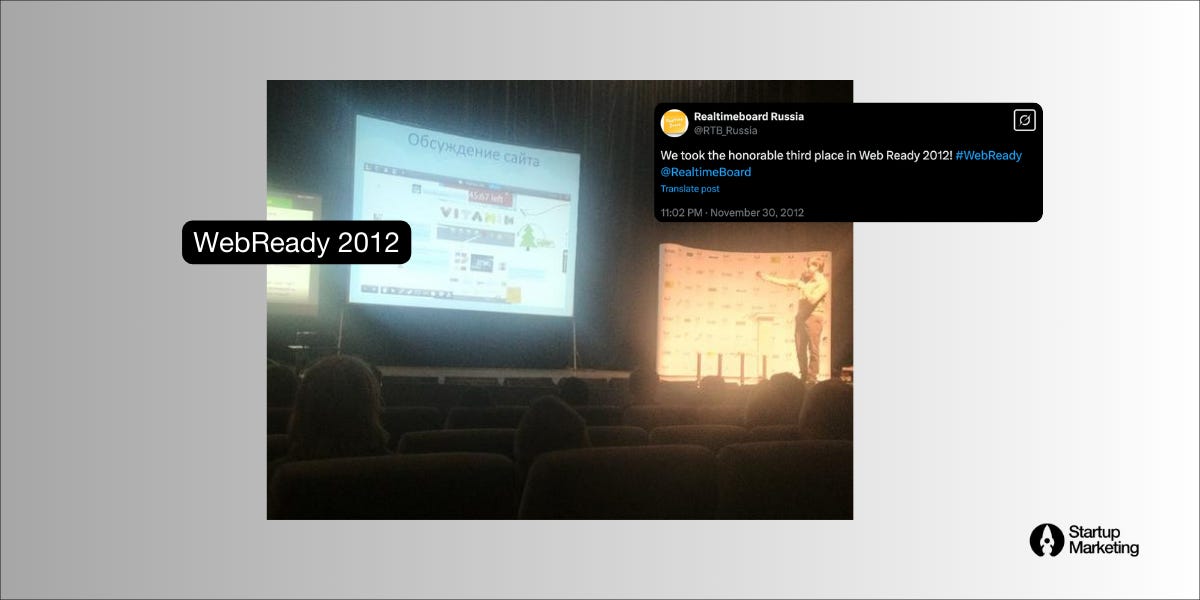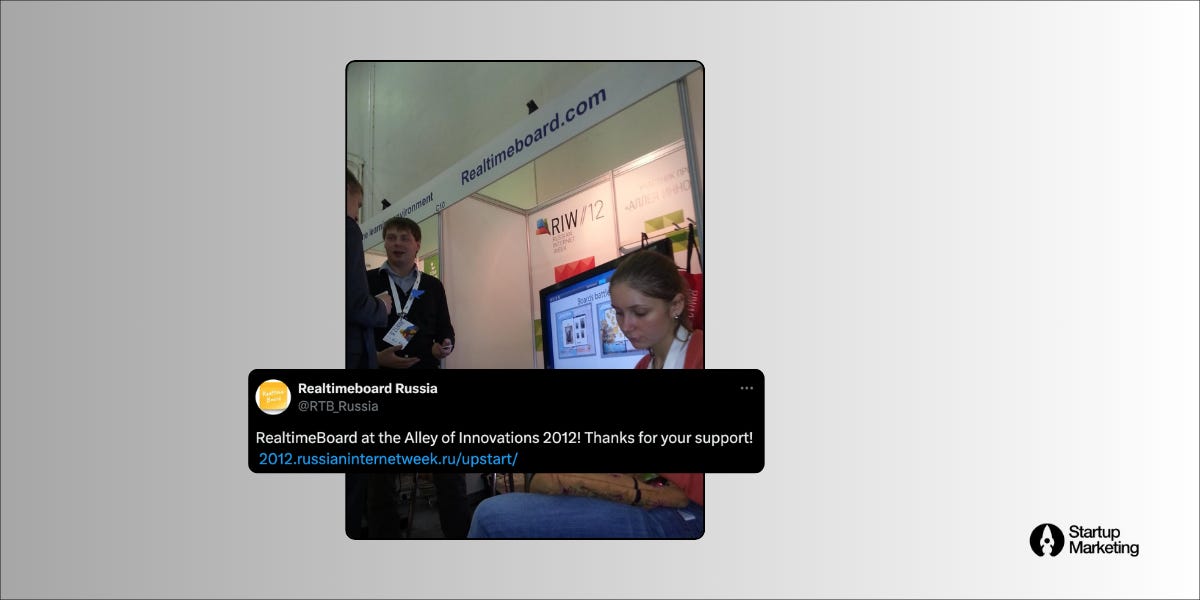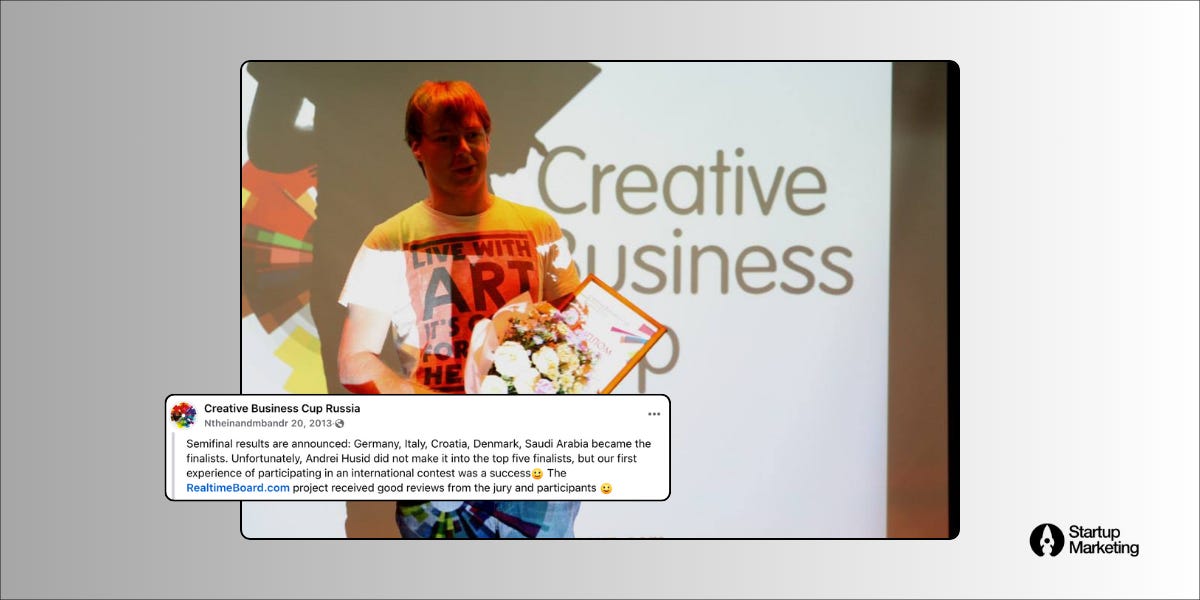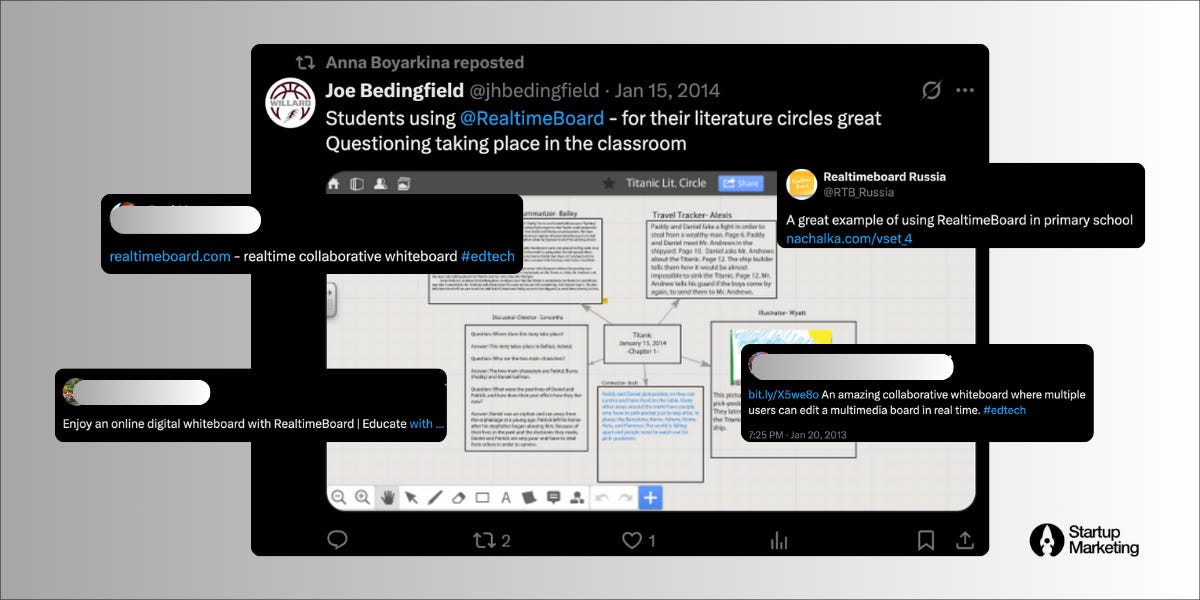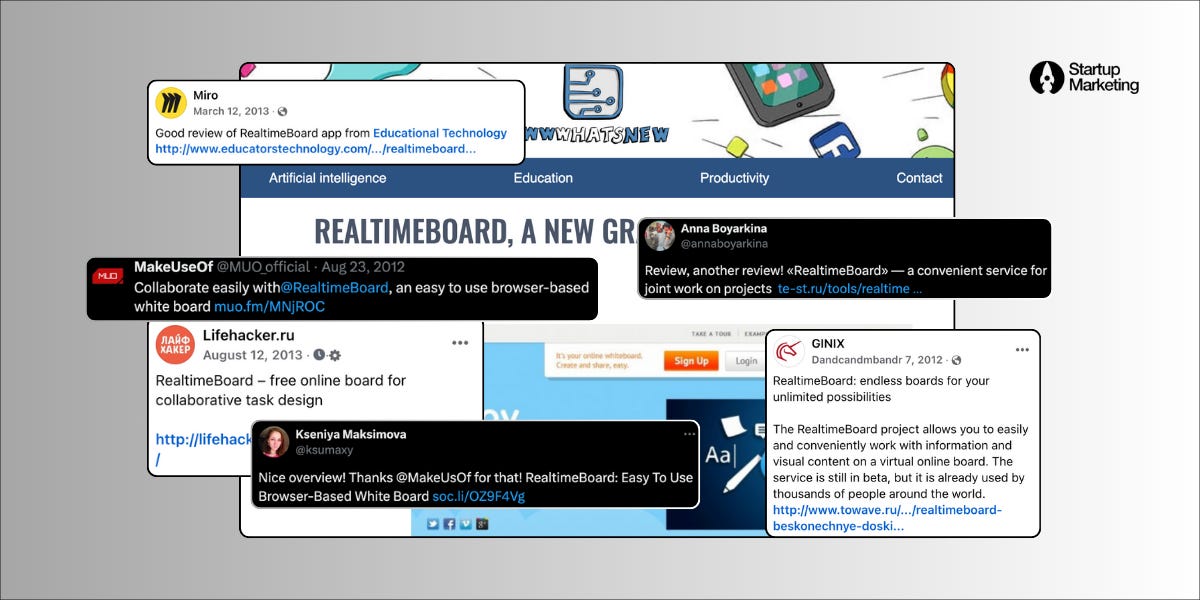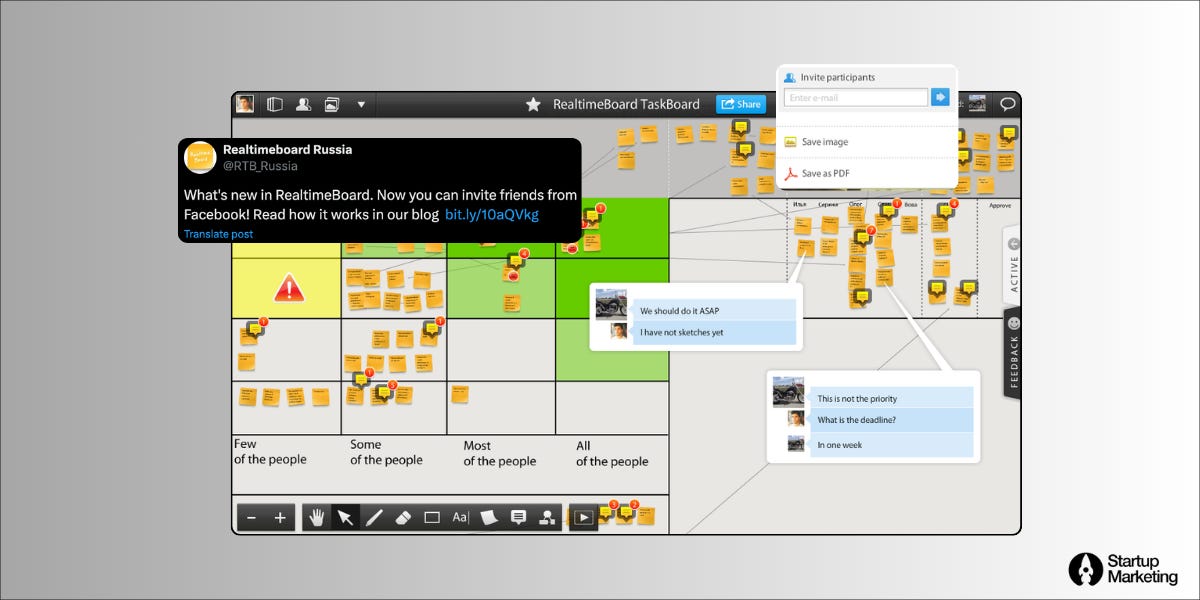Miro's $0 to $1 Million ARR Marketing Strategy
A deep-dive into Miro's bottom-up growth strategy that helped them grow to $1M ARR.
👋 Hey, it’s Elan. Welcome to my weekly newsletter, where every week I pick one successful SaaS startup and break down how it grew from $0 to $1 million in ARR. I specifically focus on their marketing strategies - where they started, what worked, and how they executed it.
This week, I covered Miro in the ‘Startup Marketing’ series. I just realized that all the products I’ve analyzed so far accidentally share one thing in common: built-in virality or shareability.
But each one made their product organically shareable in unique ways - and Miro is no exception.
About Miro
Did you know that Miro was RealtimeBoard until 2019?
Founded in 2011 and launching its beta in 2012, Miro has grown into a unicorn startup valued at $17.5 billion, generating $290 million in revenue with over 90 million users.
There are many parallels between Figma and Miro. Like Figma—a collaborative design tool—Miro offered an online collaborative whiteboard solution.
Additionally, Miro adopted a bottom-up GTM strategy, similar to Figma.
But Miro’s growth is unique in its own way. As always, we'll deep-dive into its marketing strategy.
Miro’s Marketing Strategy
From the start, Miro was intentional about both its product and growth strategy, aiming to create a simple, easy-to-use tool with a bottom-up flywheel.
We were thinking how we can build as simple as possible product that can have a growth fly well and that's why we build it around mental model of a whiteboard which is super simple and could be optimized for the fly well of the viral loops
- Andrey Khusid, Co-Founder & CEO, Miro
Before building its whiteboarding solution, Miro operated as a design agency and struggled to brainstorm and share ideas remotely with clients. This gave the idea for them to build an online collaborative whiteboard tool as it met their primary criteria (simple + bottom-up flywheel).
Miro’s growth strategy was simple and solid: create a simple and user-friendly product, give a great product experience, and leverage viral loops.
Here are six marketing tactics that worked for them:
Personal network and online communities
Startup competitions and events
Review websites
Chrome extension
In-built collaboration
Templates
Online Communities and Network
Once they had a working product, they reached out to early adopters through their personal network - family, friends, business partners, and Facebook communities. Since whiteboarding is common for knowledge workers in both personal and professional settings, early users started actively using it.
This early traction helped Miro understand real-world use cases and iterate aggressively, making the product simpler and more valuable.
Startup competition and events
In the early days, Miro participated in multiple startup competitions, winning a few, which provided free PR and visibility in the tech community. These events also generated valuable backlinks as publications covered them.
Some notable competition and events they took part in:
WebReady: Russia's largest startup competition in internet and mobile technologies. They secured 3rd place in 2012.
Runet Prize: A prestigious national award recognizing contributions to Russia’s internet and IT landscape.
TechCrunch Moscow: A startup event hosting the “Startup Battle.” RealtimeBoard was a finalist and ranked 6th among 44 startups.
HSE Business Incubator: A competition for student business projects, where RealtimeBoard won HSE’s “Team of the Year” award.
RIW 12 (Russian Internet Week 2012), it is a multi-stream three-day conference attended by 15K+ people from various domains.
Cloud 2012: An industry award recognizing achievements in SaaS technology development in Russia.
Creative Business Cup: An international competition and network for creative industries professionals. RealtimeBoard reached the semi-finals.
Youth Innovation Convention, an annual all-Russia event designed to stimulate innovative scientific activity and formation of a community of young Russian science professionals.
Education Institutes
Miro strategically targeted the education sector by offering a free pro plan to educational institutions. More educators and schools adopted RealtimeBoard for teaching and brainstorming. This grassroots adoption created organic word-of-mouth growth. Here is a use case shared by a school for Realtime Board.
Reviews
Miro actively encouraged software reviewers to try and write about their product. This led to coverage on sites like MakeUseOf and WhatsNew, creating a domino effect where more reviewers started featuring them.
These reviews helped build credibility and increased search visibility for new users looking for online whiteboarding tools.
Chrome Extension
After gaining initial traction with early adopters, Miro launched a Chrome extension, leveraging Google Marketplace’s vast audience. The extension became one of their primary new user acquisition channels.
It allowed them to tap into users actively looking for productivity tools, driving additional organic installs.
Templates
A common challenge with platform-like solutions is the “blank canvas” problem -users don’t know where to start.
Miro recognized this early and introduced pre-built templates for various use cases, such as startup canvases, project boards, and calendars.
These templates not only improved user adoption but also boosted their SEO by ranking for popular search queries related to templates.
Collaboration
Like Figma, Miro is designed for real-time collaboration - whiteboarding, brainstorming, and planning.
To maximize organic adoption, Miro created viral loops by allowing users to invite teammates, peers, and clients directly into the tool.
Here are some of the ways they used:
Peer-to-peer invitations via email
Peer-to-peer invitations via Facebook
Embed sharing at outer websites and blogs
“Post to Facebook” option
Conclusion
Miro’s growth story is an inspiration if you're marketing a product with bottom-up potential. These three key initiatives helped them build on the early traction they have got,
Participating in startup competitions to validate their product and gain free PR.
Making the product organically shareable through built-in collaboration and viral loops.
Leveraging Google’s marketplace with a Chrome extension.
Miro’s story reinforces that in the early stages, you need to focus on both scalable and non-scalable initiatives to gain momentum.





